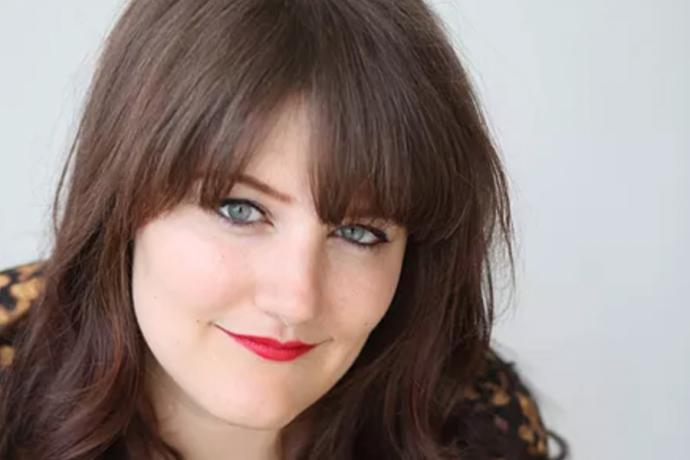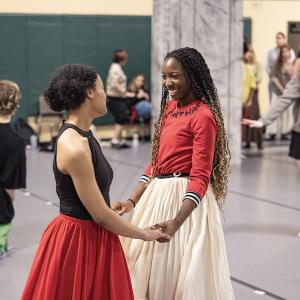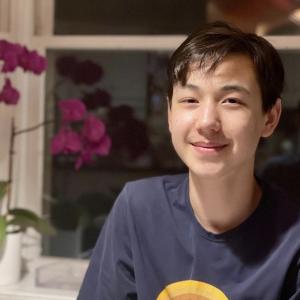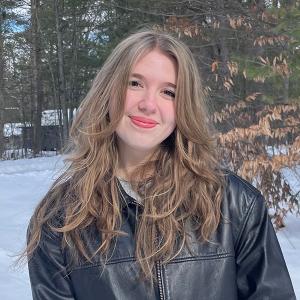Interlochen Online's next session begins May 6—enroll in any course or certificate program now.
Inside the publishing process with Brittany Cavallaro
The New York Times bestselling author, Arts Academy alumna, and Interlochen creative writing instructor shares words of wisdom for aspiring novelists and chats about upcoming projects.

Whether you’ve been writing for five years or 50, publishing your first novel, book, or poetry collection is a daunting task. How do you know when you’re ready to publish? How do you choose a publisher? What if your manuscript is rejected?
When it comes to advising students on the publishing process, Interlochen Arts Academy instructor of creative writing Brittany Cavallaro (IAA 02-04) draws on robust first-hand experience. Cavallaro released her first collection of poetry, Girl King, in 2015 through University of Akron Press and her debut novel, the New York Times best-selling A Study in Charlotte, through Katherine Tegen Books in 2016. Since then she published a second collection of poetry—Unhistorical—and expanded her debut novel into the four-book Charlotte Holmes series. Her latest novel, Muse, was released in February 2021.
In addition to teaching at the Arts Academy, Cavallaro also serves as a faculty member at the Interlochen Novel Writing Intensive. The weeklong on-campus workshop, which will take place this summer from June 18-24, brings together high school-aged writers who have completed at least 50 pages of a novel manuscript. Through these roles, Cavallaro has helped dozens of young writers hone their craft, refine their manuscripts, and understand the publishing process.
“There’s no rush to get your book out,” Cavallaro says. “My advice is to write a novel, fail in all the ways you need to fail, and learn how to write that book. Lay a strong foundation now and focus on the creative process.”
Here Cavallaro draws on her own experiences to offer an inside look at the publishing process and shares details about her current projects.
Give us a “bird’s eye view” of the publishing process from start to finish.
I teach a “Writing the Novel” class at the Academy, and one of the first things that I tell my students is that the only way to learn how to write a novel is to actually write a novel from start to finish.
Once you have finished your project, the next step is to reach out to agents or submit directly to a small press. After that, there’s usually a few years of edits, first with your agent (if you have one), then with an editor. Then comes the fun stuff—talking to your publisher about the cover, how it’s going to be marketed, and how we’re going to get your book into the hands of readers.
How do you decide whether or not to hire a literary agent? What are the advantages and disadvantages of having one, and how do you find one that suits you?
I really loved having an agent for my novel because I had largely worked in the small press world and wasn’t familiar enough with the traditional publishing scene to feel confident going it alone. I did a lot of research, read a lot of bios, and tried to figure out who was looking for the kind of projects that I was interested in.
How do you choose which publishing houses to submit to?
There’s really exciting work coming from both large and small presses right now. If you want to publish with “The Big 5”—Simon & Schuster, McMillan, etc.—you will usually need to go through an agent. Agents have built relationships with publishers, know what they’re looking for, and will work with you to make sure your book is in the best possible shape.
While there are terrific places for experimental work within “The Big Five,” you might want to consider a small press if you’re working on a project that blurs boundaries. Because small publishers have different missions, they’re more likely to be interested in a book that might not have as much commercial appeal. Smaller presses work with a smaller list, and really give a lot of attention to each book. It’s a more personal experience.
Small presses are also great for poetry collections. Putting out a collection is a labor of love: Very few sell more than a few hundred copies.
Let’s talk about self publishing, which is becoming easier and more prevalent in our digital era. Would you recommend it for a young writer?
It depends on how interested you are in being your own team. When you self publish, you need to be your own marketing team, publicist, and editor. As someone who is a teacher and a writer, I very much want to be in a position where I can put the manuscript together and let the publisher take it the rest of the way.
You’ve published books in both poetry and fiction. How does the process differ between the two genres?
I loved both experiences. Publishing both poetry and more commercial fiction means that I get to engage with different parts of the process.
Poetry is largely published on the contest model: You pay a reading fee along with your submission, and usually those fees go towards the publication of the winning book. What’s exciting about that model is that even if you don’t win, you’re participating in the process of putting more poetry out into the world.
Promoting a poetry collection is very different from promoting a novel. You are largely on your own—you might set up your own readings, read with friends or pressmates, or attend conferences. I love giving poetry readings and having the opportunity to sign books for readers. It feels very intimate.
By contrast, when you publish with a “Big Five” publisher, you usually have a wonderful team who helps you take care of all of the promotion. You’ll work with a publicist and marketing department, who will set up tours for you, take care of promoting your book across social media, and pitch articles about your book to media outlets. You get to focus on the writing.
How do you cope with having your manuscript rejected by a publisher?
I think that one really good thing to do as a young writer is to send your work out into the world early and get used to hearing “no.” I keep a giant file of all the “nos” I’ve been told, and I know that there were a lot of good reasons for those rejections. I think if you are feeling crushed by your rejection, the best news is that the work is still ahead of you. You can continue editing your manuscript, or you can write another one.
What’s one thing you wish you knew about the publishing process going into it?
It is not fast. Even after your book gets taken, it’s still going to be a year or more before it goes out into the world. You also have to be willing to rewrite your book from page one, and then do it again. You have to be able to separate your ego from your creative process. You don’t get to explain your book to your readers. All you can do is just try to put the best thing out possible.
What’s the biggest piece of advice you would give an aspiring novelist?
There’s no rush to get your book out. I worry sometimes that younger writers are in a really big rush to publish because they think it’s a way to get into college. I don’t necessarily agree with that.
The novel you write at 18 is not going to be as good as the book you publish in your 20s. My advice is to write a novel, fail in all the ways you need to fail, learn how to write that book, and then revise it. Maybe that’s the book you publish; maybe that’s the novel that teaches you how to write a novel.
Lay a strong foundation now and focus on the creative process. You can only debut once, so put out your best work first. You don’t want to rush any of this.
Can you tell us a bit about your most recent and your forthcoming project(s)?
The first book in my new duology about the World’s Fair, a feminist alternate history project called Muse, came out last February. I’m currently working on the sequel, which is coming out next year. I’ve also been working on a novel in “verse and conversation” with a writer friend named Jeff Zentner—I’m very excited to see where that ends up!





